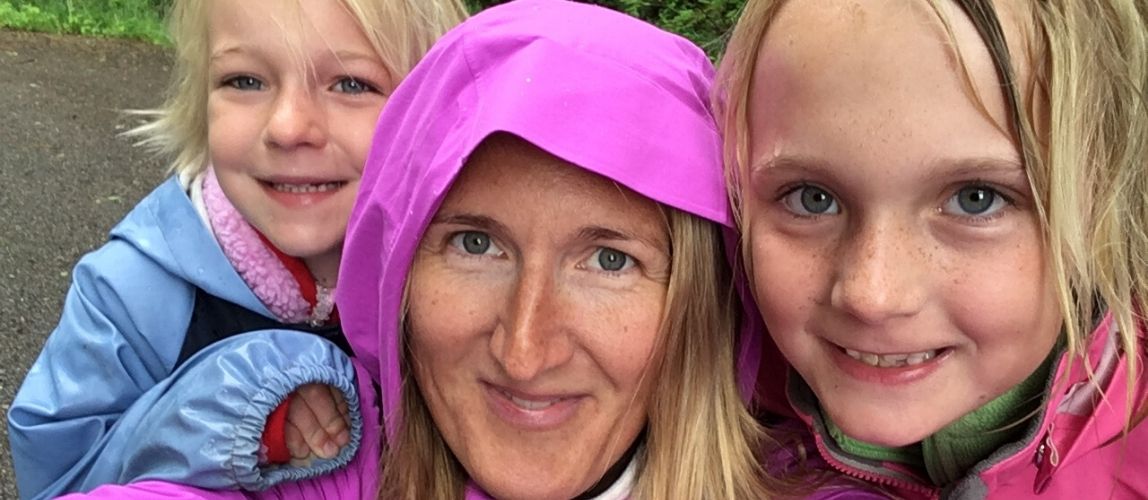When I was a principal, it broke my heart that we had to follow rules and keep children inside when it was "cold" out. School-aged children already spend so little time outside; keeping them indoors just because of winter weather felt like such a shame.
I’ve since learned that being outdoors all year long is important to physical and mental wellness for all of us. As long as children have the right gear, health professionals agree that outdoor time in the winter is not only safe, but also healthy. Getting kids outside in the cold can help them build mental resilience — a skill that can benefit them in all situations throughout life, as well as confidence to step outside of their comfort zone, physically and emotionally. Of course, depending on where you live there could be days that are too cold to be safe, but most winter days are just fine.
In the 1970s and ‘80s, kids spent twice the amount of time outdoors than children do now. That means that our kids today have lost 50 percent of their outdoor time. Even though there seem to be so many reasons to stick inside come winter, can we really allow the winter months to cut that amount by another 25 percent just because it’s cold?
According to Linda McGurk, a journalist and author, as well as the blogger behind Rain or Shine Mamma, we absolutely don’t have to — in fact, it’s wonderful when we commit to outdoor living all year long. McGurk has spent years writing a blog dedicated to connecting kids with nature. Her book, There's No Such Thing as Bad Weather, outlines why it is so important to get our kids outdoors in all climates in a way that makes you laugh out loud. Perhaps most helpful are McGurk’s generous and useful tips on how to weave outdoor play into your child’s life — and your own.
I had a chance to speak with McGurk about her book, philosophy for outdoor time, and advice for parents. Here’s what I learned from her:
For those who do not already know you, how would you describe yourself in a few sentences?
I’m a Swedish-American journalist, author and blogger who lives in rural Indiana with my husband and two daughters, who are 6 and 9 years old. Like most Swedes, I developed a bond with nature early on in life and ever since I became a mother, passing on this appreciation for the outdoors to my two daughters has been one of my biggest passions.
Many members of the Tinkergarten community, including myself, have known you for a long time as “Rain or Shine Mamma.” Can you tell how you started that blog and how your community developed?
I started the blog in 2013 partly because I wanted to share the experiences from my outdoorsy parenting style with others, and partly because I was hoping to connect with like-minded parents. I’ve gotten to know trailblazers in the children and nature movement from all over the world, and tens of thousands of parents, educators and other caregivers now rely on my blog for tips and inspiration.

For those who have yet to read the book, what drove you to write There’s No Such Thing as Bad Weather?
I’ve had the idea for the book since my first daughter was born and I realized that she was going to have a childhood that was very different from my own. The culture in Indiana is pretty “indoorsy” and in the winter most people go into hibernation, so time after time I would find myself alone with my daughter outside. There was very little in the way of outdoor play at daycare and preschool as well, and once she started school, outdoor recess was far from guaranteed. I noticed that children in the U.S. seemed to have much less free time and less freedom to play outside on their own than what I was used to in Sweden. The intense focus on academics in the early years and what I perceived as a disconnect between children and nature in the U.S. made me want to write about the Scandinavian model, where nature is considered a sacred part of childhood.
With winter approaching, many loving parents worry about the danger of exposing children to winter weather. What do you see as one of the most compelling reasons that being outdoors is actually good for kids’ health?
Playing outside benefits children on so many levels that it’s hard to pick just one. Nature is no cure-all, but if we look at some of the biggest health challenges facing children today — diabetes, overweight and obesity, ADHD, sensory processing disorders, and asthma and allergies — research suggests that outdoor play can help prevent or reduce the symptoms of all of these. These health benefits are real regardless of what the weather is doing, and that’s the reason why I’m so adamant that kids play outside every day, even when it’s cold or rainy. By making it a habit from when they’re young, there’s a greater chance that they’ll keep up a healthy lifestyle when they get older.
Sometimes those of us who do get our kids outdoors in all weather feel like strangers in a strange land. What advice do you have for families who feel isolated, even misunderstood among their indoor-oriented neighbors?
I can definitely relate to that feeling. I always advise people to try to find their posse. Even in places where there’s little to no outdoor culture, you can usually find at least a few people to connect with. As for the rest — I try to look at it as an opportunity to educate and hopefully inspire others in the process. There’s a lot of fear surrounding outdoor play and part of the reason why I wrote my book was that I wanted to dispel some of those fears. I just heard from one reader who said she’s not outdoorsy herself at all but after reading my book she’s letting her daughter walk home from school by herself. Little changes like that can make a huge difference.
The concept of Hygge is making its way into America. What is one of your favorite ways to inspire Hygge for your family?
To me, hygge is all about creating a feeling of coziness in the darkness of winter — inside and outside —and it often involves fire. Sledding or hiking with the kids, followed by grilling hot dogs and drinking hot chocolate around a campfire is how we like to hygge. And nothing beats lighting a fire in the woodstove and playing a board game as a family after spending the day outside.
The book is full of wonderfully relatable stories of your imperfect attempts to get your girls to join you on outdoor adventures. What tips can you give for how to persist, even when kids resist your invitation to play outdoors?
First of all, I think it’s really important that us adults are able to reframe our own feelings about the weather. There are days when I don’t feel like going outside at all, but I always try to put a positive spin on it anyway. If the kids resist, I just tell them that we’re going outside for just 15 minutes and then they can decide whether to come back in or stay out. Usually, they end up wanting to stay outside longer. Secondly, I highly recommend making outdoor play a firm part of your daily routine. Once your kids get used to it, they come to expect it and are much less likely to resist, even in inclement weather. I think we also need to recognize that getting kids outside can be really hard work, and not every outing will be perfect. But knowing that you’re raising a child who is truly connected with nature makes the journey worthwhile.

